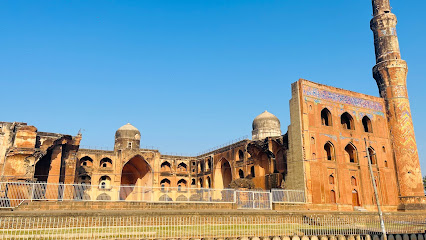
The Mahmud Gawan Madarsa, is one of the most remarkable monuments of the Bahmani dynasty, reflecting the grandeur of Persian architectural influence in India. It was built in the late 15th century by Khwaja Mahmud Gawan, a Persian noble who served as a prime minister under the Bahmani sultans. The madarsa functioned as an Islamic college and a center of learning, attracting scholars from across the Islamic world. The structure, though partially ruined today, was originally a three-storeyed building with a large courtyard, lecture halls, a library, and a mosque. The towering minarets, adorned with intricate tile work, and the elegant arches are testament to the sophisticated craftsmanship of the time. The façade of the building features turquoise tiles, a signature of Persian architecture, and verses from the Quran are inscribed on the walls. The madarsa played a significant role in the intellectual and cultural development of the Bahmani kingdom, serving as a hub for the study of Islamic theology, astronomy, mathematics, and Persian literature. Despite being damaged over the centuries, particularly by a gunpowder explosion in the 17th century, the Mahmud Gawan Madarsa remains a symbol of Bidar's historical and architectural heritage, reflecting the confluence of Persian and Deccan traditions.